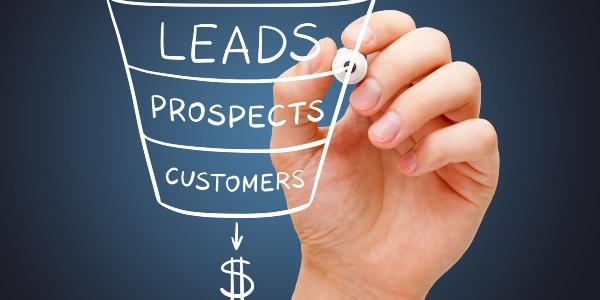5 Ways to Follow-up With Prospective Clients

By Ingage
Following up with sales leads is a very important step in securing a sale. Here are a few tips to help you succeed.
Nearly all consumers have been in the position where they’re thinking about buying something but they need a little time to make the decision. Well, as time passes it is very possible that the consumer can forget about their intention of buying the product in the first place. That’s why having a tactic in place for follow-ups can get your prospective customer on your side of the fence and end up purchasing your product. With that being said, a follow-up done the wrong way can cause major aggravation and make the client lose interest completely. Here are five ways to perform respectful follow-ups:

The frequency of contact with a prospect will determine how quickly they buy your product or service. A well-timed contact lets you learn more about the customer. It means that you'll probably secure the sale when the time is right. In addition, contacting your sales leads creates the opportunity for customers to be heard. Some buyers have specific preferences that can't be fulfilled until you fully understand their needs.
One of the greatest obstacles to initiating follow-ups is the fear of rejection. Salespeople must develop a thick skin when contacting prospects, especially if they are past clients. An excellent way to do this is to consider the follow-up as a continuous process, where lead generation doesn't always produce a sale. People are more confident in their approach when the stakes are lower.
Cold calls and emails are two of the most common ways to follow up with a sales lead, but you have to do them right. Let’s look at a few tips you can utilize to follow up on leads successfully.
1 - Space your follow-ups
Spacing out your follow-ups plays a huge role in determining whether you secure the sale or not. Many salespeople think follow-ups are probably the most annoying thing to prospective leads. That's not necessarily true. Poorly timed or spaced check-ins are the problem. While there’s no perfect formula, weekly contacts are generally considered adequate frequency.
Don't be afraid of sending more than two follow-up emails to potential or repeat clients. Many salespeople assume that prospects aren't interested if they don't reply positively to the first follow-up email. Again, this is not necessarily the case, perhaps the first message came at an inopportune time and slipped their mind. A second or third follow-up email may prompt them to remember to review the original message.
Of course, there’s a limit. Sending more than six follow-up emails comes off as spamming, especially if the prospect doesn't respond. Being pushy will not earn you respect among prospects. Instead, busy targets will likely get offended if you keep bugging them with annoying hourly or daily emails. Today’s smartphones have push notifications that relay emails immediately. A barrage of pings about sales promotions will quickly irritate customers trying to do important work.
Knowing when to quit pursuing a specific target is also important. Some targets will never convert, meaning that insisting beyond a certain point is a waste of time.
How do you know you've done everything possible? Don't go below three or over six follow-up emails without receiving feedback from sales leads. You can use smart sales assistance tools like Ingage to schedule and manage your follow-up email campaign, so that your check-ins always stay on time.
2 - Offer value in every follow-up
When it comes to sales, everyone's ultimately in it for themselves — including the customer. Your target will appreciate follow-up emails more if you provide free content such as e-books, tutorials, guides or videos. The free content must obviously be valuable enough to bring the client back into business with you. Remember, resuming business with a past client is easier than restarting the entire process!
Of course, you want to make sure your leads actually get to a point where they view your special offer. If the formatting is off, they may not even notice your value, and pass on your follow-up. That's where a robust presentation software and image editing tools come in handy. Building a relevant, empathetic presentation with clear branding will attract your prospects’ attention every time. Software like Ingage gives you the tips and tools to deliver the extra content to your sales leads effortlessly.
3 - Use a catchy subject line
If you're like most people, the email subject is probably the last thing you write before hitting the "send" button. It’s an afterthought, something you slap on just to have a header. This strategy is also a big mistake.
Most recipients judge new emails by the subject line instead of the content. In many cases, they won't even open the message if the subject line is off-putting, boring or looks spammy. That’s why you need to invest a proper amount of time in your subject line.
Writing an excellent header is quite easy if you stick to a few proven tips:
-
The subject line should be the first thing you write. This ensures that you don't send header-less emails. Also, setting the subject line from the start ensures that your content aligns with your intention.
-
The subject line should be short. Remember, most of your prospects will receive an email notification on their smartphones. According to Business Insider, 50% of all emails are read on a mobile device so you need to keep it readable. Six to eight words are enough.
-
Keep the most important words or phrases at the beginning. Again, many recipients will read your email on a small mobile screen. You don't want important words cut off at the edge of the display.
-
Avoid using filler words. Leave those for the content of the message and keep your header to what’s absolutely necessary.
Your subject line should convey the purpose of your content succinctly and directly. If your email is well-crafted, coming up with a professional and attention-grabbing subject line shouldn't be a chore. Simply sum up the purpose in a catchy, quick, friendly phrase.
Along with knowing what to do, you want to remember what to avoid. Wordy, unnecessarily emotional writing and recycled, stale lines are a bad idea. Likewise, spammy keywords and all-caps “shouting” (think headlines like “FREE! TODAY! NOW!”) are an automatic turn-off for readers of all stripes.
4 - Don't be pushy
Pushing your prospects to take certain actions might make them suspicious of your intentions. Give them space to decide whether they want your products or not. From the tone of your very first email, prospects can tell whether you'll be the pushy and annoying sort, or give them breathing room. This helps them determine whether to send your message to spam or give you a chance to make a case for your products.
One way to win a prospect's trust is to ask how they prefer you to follow up. Asking for guidance is an instant show of respect and autonomy. Likewise, ending all conversations with a well-defined next step will create anticipation without the unnecessary pressure many marketers put on their sales leads. Summarize conversations and send them back to prospects for confirmation to show that you're committed to the exchange. With such fierce competition in nearly every industry these days, the last thing a prospect will accept is a company that doesn't nurture them.
Contacting a prospect should be accompanied with a specific intent. Just “checking in” and “touching base” are not reason enough. One good evergreen reason to contact your leads is to share a free resource. It naturally creates a path toward securing a sale. Having analytic data on your leads’ behavior and interests can prove invaluable and Ingage Analytics can provide insights on your prospects past behavior to help you strategize these interactions appropriately.
5 - Give them options to connect
While email is an excellent communication tool for most business purposes, it shouldn't be the only one. Many people prefer other ways to keep in touch, such as texting and calls, depending on the urgency.
It's impossible to correctly assume whether your prospects want you to stick to emails or not. Give them the chance to tell you. You may discover that they are more receptive to your services through a phone call or a text. Recommend a range of communication channels, including regular email, website chat, text messaging, social media and voice calls. Sales leads will naturally choose their preferred medium.
Enhance your follow-ups with Ingage

Follow-ups are an excellent way to continually reassess prospect quality while creating opportunities for further sales. However, many marketers are afraid to follow up on their leads — and those who do rarely use the right approach.
Pace your follow-ups and make sure your intent is always clear and well thought out. Offering value incentives can also help entice sales leads to make another selection. But above all, you want to make sure your content is relevant and empathetic to your prospects’ needs.
Powerful presentation software like Ingage gives you the tools to rise to the occasion when it comes to crafting compelling collateral. The easy interface allows you to create dynamic, engaging material, while a robust analytics department helps track what matters to your shoppers. Ingage helps you develop content that will foster trust, keep the connection alive and spur leads to consider a future sale. Contact Ingage to try out your demo today!
Learn more about Ingage in their RoofersCoffeeShop® Directory or visit www.ingage.com.
Original article source: Ingage





















Comments
Leave a Reply
Have an account? Login to leave a comment!
Sign In